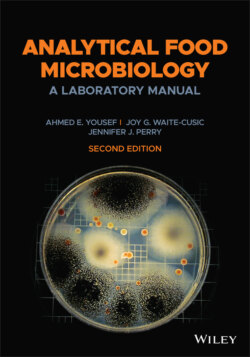Читать книгу Analytical Food Microbiology - Ahmed E. Yousef - Страница 38
Swab method
ОглавлениеA sterile cotton swab may be used for limited surfaces or on hard‐to‐reach crevices. The swab is typically made of a wound cotton head (~0.5 cm diameter and 2 cm long) and a 12–15 cm long wooden stick. The swab may be prepared in the laboratory, sterilized, and kept in a sterile container until the time of use. Alternatively, cotton swabs may be purchased as individually wrapped sterile units. In addition to the swab, a sterile rinse solution in a test tube is needed for surface sampling. Many commercially available products include a sterile swab packaged with appropriate diluent in a shatterproof (plastic) tube. A predetermined area (e.g., 100 cm2) of the surface to be sampled is swabbed with the moistened cotton swab, which is returned to the rinse solution tube. The rinse solution may be diluted serially, and selected dilutions are spread on the surface of a suitable agar growth medium. The inoculated plates are incubated, and populations of the targeted microorganisms are counted. In this scenario, when quantitative results are desired, the rinse solution is considered the undiluted analytical sample.
